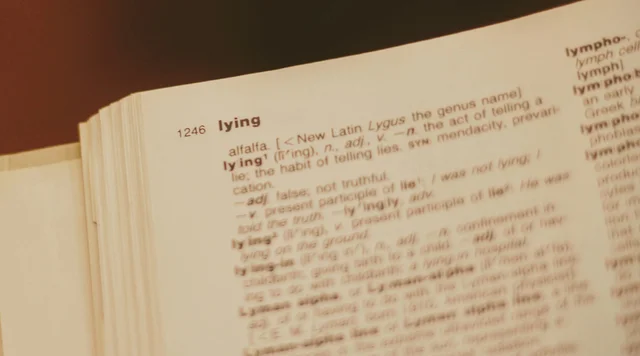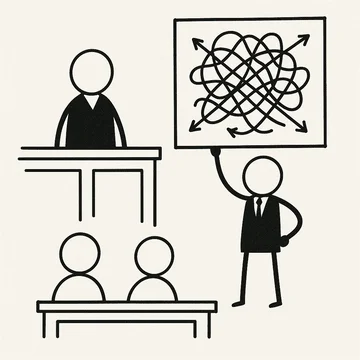We mentioned earlier this week that "plain and ordinary meaning" (sometimes shortened as "plain meaning" or "ordinary meaning") is the default in claim construction. But what is it?
As the Federal Circuit has said, plain and ordinary meaning is the meaning of a phrase to a person of skill in the art:
The ordinary and customary meaning of a claim term is the meaning that the term would have to a person of ordinary skill in the art in question at the time of the invention, i.e., as of the effective filing date of the patent application. . . . The inquiry into how a person of ordinary skill in the art understands a claim term provides an objective baseline from which to begin claim interpretation. . . . Importantly, the person of ordinary skill in the art is deemed to read the claim term not only in the context of the particular claim in which the disputed term appears, but in the context of the entire patent, including the specification.
Phillips v. AWH Corp., 415 F.3d 1303, 1313 (Fed. Cir. 2005).

During claim construction, a defendant may try to import limitations from the specification into the claims, or to construe terms in the claims based on narrow definitions found in the specification and file history.
Plaintiffs typically push back, often arguing that the claim language should instead be construed to have its "plain and ordinary meaning." In that context, plain meaning essentially means "no construction," or "the meaning the term would have if defendants cannot limit it."
Other times, either party may seek a construction of a claim term that is simply subject to multiple interpretations, essentially asking the Court to determine the scope of the claim as written, so that the parties can then argue about whether the accused products fall within or outside of that scope.
In that context a "plain meaning" construction may essentially be circular, with one party asking the Court to determine what the plain meaning of the claim is to one of skill in the art, and the other arguing that the plain meaning is the plain meaning.
Why Do Plaintiffs Often Want to Construe Terms as "Plain Meaning"?
In my view, at least, patentee plaintiffs may want to construe terms to have a broad and unspecified "plain and ordinary meaning" for several reasons:
- It makes summary judgment less likely and trial more likely.
- It's easy, as it is the "default" and the law generally disfavors limiting the claims.
- It leads to broader and more flexible claims, and lets the plaintiff's expert argue that the claims cover the accused product(s) but not the prior art.
A patentee plaintiff typically wants to pressure defendants via trial as soon as possible. A trial is expensive for defendants and, in most cases, there is no realistic route to a successful resolution for a plaintiff other than trial or settlement. The pressure of an impending trial date encourages a favorable settlement for plaintiffs.
Defendants, on the other hand, often seek early resolution in their favor while simultaneously trying to push back the trial date to relieve the pressure.
With that context, it's easy to see why plaintiffs often go for "plain meaning" constructions, and are often reluctant to say what the "plain and ordinary meaning" is. An actual construction early in the case may lead to early resolution, which favors defendants.
A "plain meaning" construction, on the other hand, forces both parties' experts to argue that the accused products meet the claim elements and the prior art doesn't—thus setting up a "battle of the experts" and a potential dispute of fact that reduces the risk of summary judgment for the plaintiff.
How Does O2 Micro Play Into This?
Parties often cite the Federal Circuit's O2 Micro case in arguing that the Court cannot construe a term simply as "plain and ordinary meaning." See O2 Micro Int'l Ltd. v. Beyond Innovation Tech. Co., 521 F.3d 1351, 1361-62 (Fed. Cir. 2008).
The Federal Circuit held in O2 Micro that the Court, not the jury, must resolve disputes about claim scope:
When the district court failed to adjudicate the parties' dispute regarding the proper scope of [the claim,] the parties presented their arguments to the jury. By failing to construe this term, the district court left the jury free to consider these arguments.
. . .
When the parties present a fundamental dispute regarding the scope of a claim term, it is the court's duty to resolve it.
Id.
But as Judge Noreika recognized earlier this year, O2 Micro requires only that the Court resolve disputes regarding the scope of the claim—not that it necessary construe all language in the claim.
And, of course, O2 Micro says nothing about when a claim construction dispute must be resolved, other than it that the issue cannot go to the jury. Yes, the default is generally that claim construction occurs before final contentions and case dispositive motions.
But some of our judges in Delaware have at times required that claim construction occur after expert testimony, with experts offering alternative opinions depending on how the claims are construed. Former Judge Robinson, for example, at times had a practice that all claim construction occurred at the same time as dispositive motions.
Thus, it's important to keep in mind that while O2 Micro says that a Court must resolve the dispute about scope, it doesn't say the Court must provide a construction for every term (as Judge Andrews demonstrated last month).
That, and don't propose a plain meaning construction before Chief Judge Connolly without saying what that plain meaning is.
If you enjoyed this post, consider subscribing to receive free e-mail updates about new posts.






